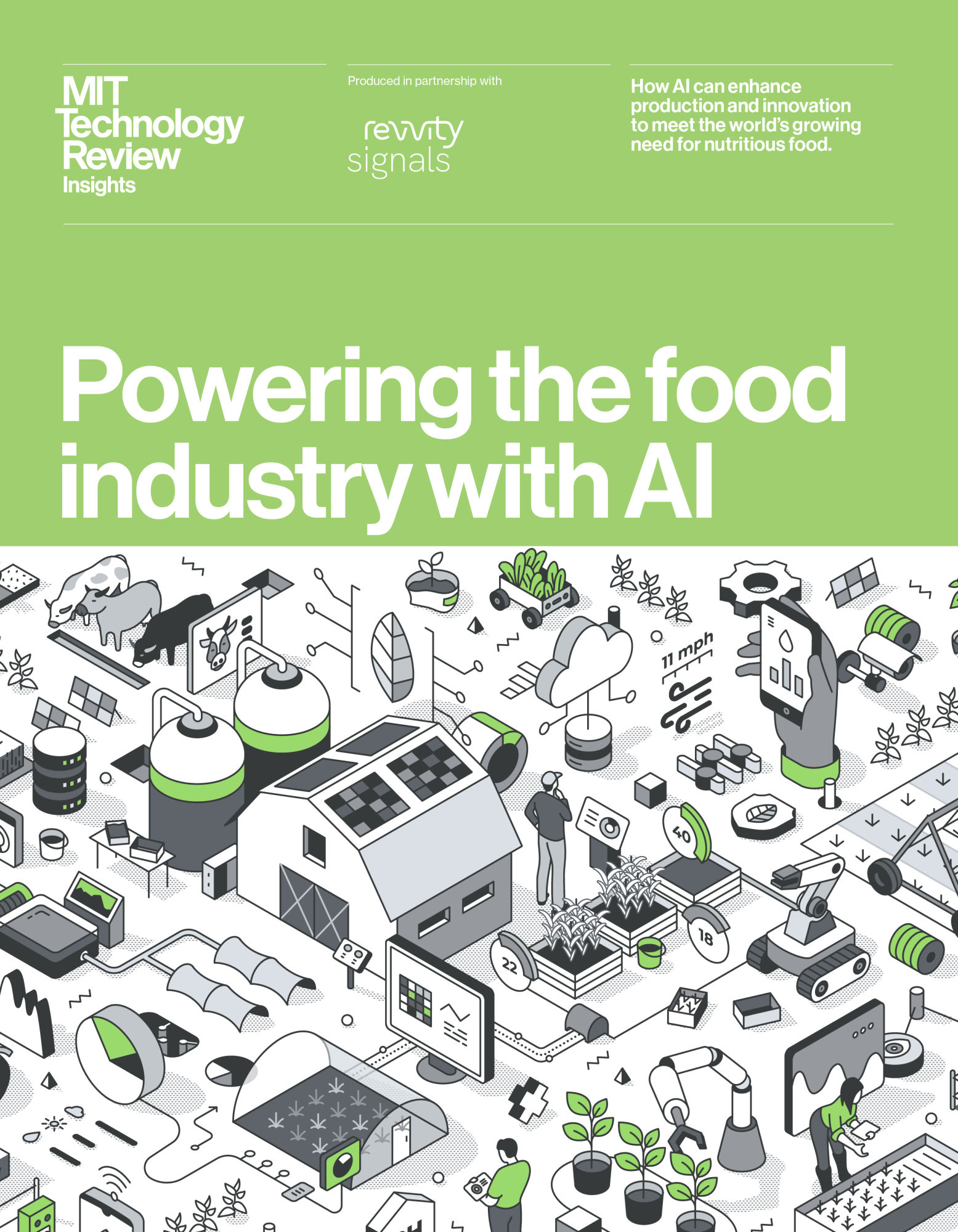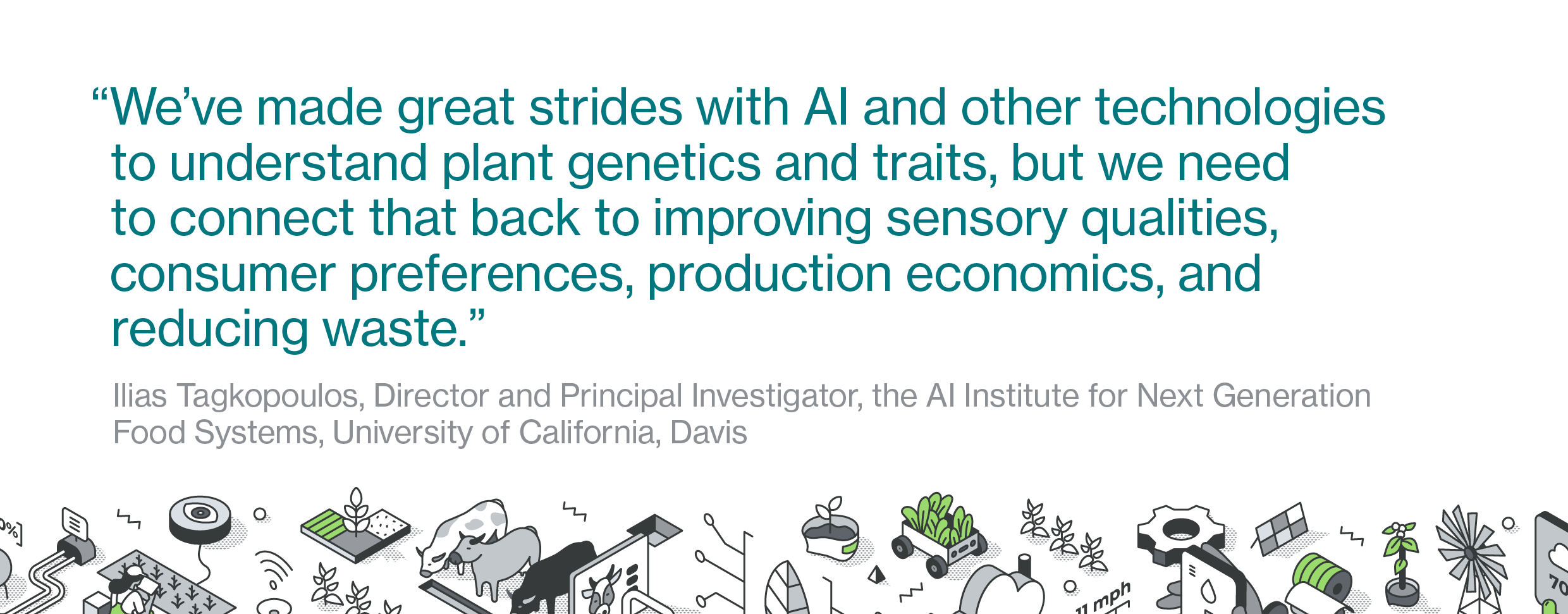Sponsored
Powering the food industry with AI
How AI can enhance production and innovation to meet the world’s growing need for nutritious food.
In partnership withRevvity Signals
There has never been a more pressing time for food producers to harness technology to tackle the sector’s tough mission. To produce ever more healthy and appealing food for a growing global population in a way that is resilient and affordable, all while minimizing waste and reducing the sector’s environmental impact. From farm to factory, artificial intelligence and machine learning can support these goals by increasing efficiency, optimizing supply chains, and accelerating the research and development of new types of healthy products.
In agriculture, AI is already helping farmers to monitor crop health, tailor the delivery of inputs, and make harvesting more accurate and efficient. In labs, AI is powering experiments in gene editing to improve crop resilience and enhance the nutritional value of raw ingredients. For processed foods, AI is optimizing production economics, improving the texture and flavor of products like alternative proteins and healthier snacks, and strengthening food safety processes too.

But despite this promise, industry adoption still lags. Data-sharing remains limited and companies across the value chain have vastly different needs and capabilities. There are also few standards and data governance protocols in place, and more talent and skills are needed to keep pace with the technological wave.
All the same, progress is being made and the potential for AI in the food sector is huge. Key findings from the report are as follows:
Predictive analytics are accelerating R&D cycles in crop and food science. AI reduces the time and resources needed to experiment with new food products and turns traditional trial-and-error cycles into more efficient data-driven discoveries. Advanced models and simulations enable scientists to explore natural ingredients and processes by simulating thousands of conditions, configurations, and genetic variations until they crack the right combination.

AI is bringing data-driven insights to a fragmented supply chain. AI can revolutionize the food industry’s complex value chain by breaking operational silos and translating vast streams of data into actionable intelligence. Notably, large language models (LLMs) and chatbots can serve as digital interpreters, democratizing access to data analysis for farmers and growers, and enabling more informed, strategic decisions by food companies.
Partnerships are crucial for maximizing respective strengths. While large agricultural companies lead in AI implementation, promising breakthroughs often emerge from strategic collaborations that leverage complementary strengths with academic institutions and startups. Large companies contribute extensive datasets and industry experience, while startups bring innovation, creativity, and a clean data slate. Combining expertise in a collaborative approach can increase the uptake of AI.
This content was produced by Insights, the custom content arm of MIT Technology Review. It was not written by MIT Technology Review’s editorial staff.
Deep Dive
Artificial intelligence
Everyone in AI is talking about Manus. We put it to the test.
The new general AI agent from China had some system crashes and server overload—but it’s highly intuitive and shows real promise for the future of AI helpers.
Anthropic can now track the bizarre inner workings of a large language model
What the firm found challenges some basic assumptions about how this technology really works.
China built hundreds of AI data centers to catch the AI boom. Now many stand unused.
The country poured billions into AI infrastructure, but the data center gold rush is unraveling as speculative investments collide with weak demand and DeepSeek shifts AI trends.
AI reasoning models can cheat to win chess games
These newer models appear more likely to indulge in rule-bending behaviors than previous generations—and there’s no way to stop them.
Stay connected
Get the latest updates from
MIT Technology Review
Discover special offers, top stories, upcoming events, and more.